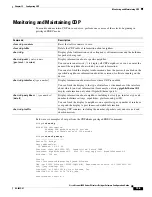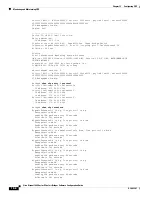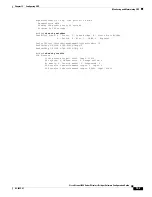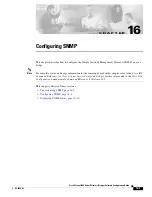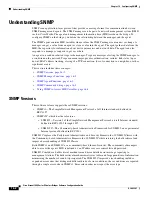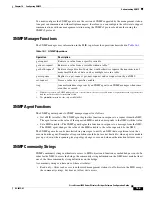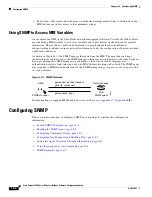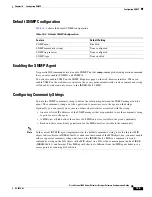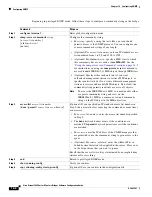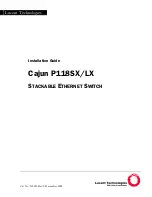
16-5
Cisco Aironet 1400 Series Wireless Bridges Software Configuration Guide
OL-4059-01
Chapter 16 Configuring SNMP
Configuring SNMP
Default SNMP Configuration
Table 16-2
shows the default SNMP configuration.
Enabling the SNMP Agent
No specific IOS command exists to enable SNMP. The first
snmp-server
global configuration command
that you enter enables SNMPv1 and SNMPv2.
You can also enable SNMP on the SNMP Properties page on the web-browser interface. When you
enable SNMP on the web-browser interface, the access point automatically creates a community string
called
public
with read-only access to the IEEE802dot11 MIB.
Configuring Community Strings
You use the SNMP community string to define the relationship between the SNMP manager and the
agent. The community string acts like a password to permit access to the agent on the bridge.
Optionally, you can specify one or more of these characteristics associated with the string:
•
An access list of IP addresses of the SNMP managers that are permitted to use the community string
to gain access to the agent
•
A MIB view, which defines the subset of all MIB objects accessible to the given community
•
Read and write or read-only permission for the MIB objects accessible to the community
Note
In the current IOS MIB agent implementation, the default community string is for the Internet MIB
object sub-tree. Because IEEE802dot11 is under another branch of the MIB object tree, you must enable
either a separate community string and view on the IEEE802dot11 MIB or a common view and
community string on the ISO object in the MIB object tree. ISO is the common parent node of IEEE
(IEEE802dot11) and Internet. This MIB agent behavior is different from the MIB agent behavior on
access points not running IOS software.
Table 16-2 Default SNMP Configuration
Feature
Default Setting
SNMP agent
Disabled
SNMP community strings
None configured
SNMP trap receiver
None configured
SNMP traps
None enabled







